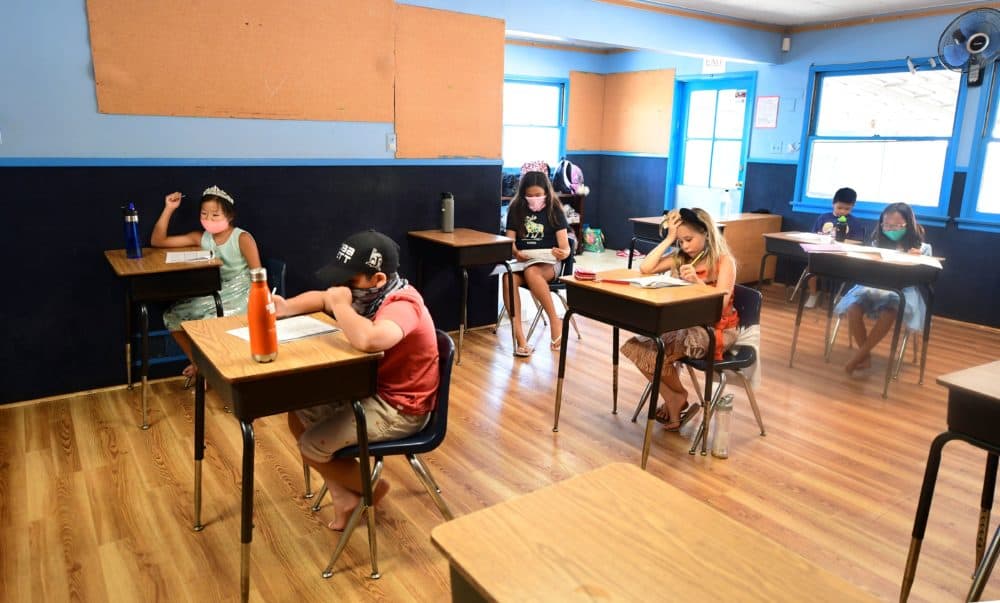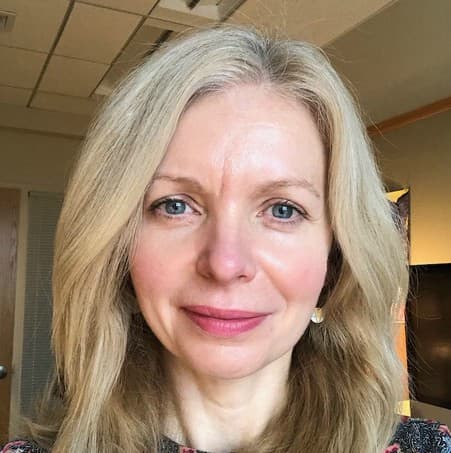Advertisement
Commentary
We Bailed Out Banks And Car Companies. Why Can’t We Invest Enough To Make Our Schools Safe?

There’s a vigorous debate in our town, Brookline, about whether and how to reopen schools for in-person learning.
Concerns about teachers’ health are particularly salient — nearly a quarter of Massachusetts teachers are older than 55. To comply with the Massachusetts Department of Education’s careful, research-driven guidelines for school reopening will require substantial resources, management and innovation. And this is an investment we have to make.
As costly as it may be to make schools safe, it is costlier to keep them closed. We must do all we can to minimize the potential risks of in-person schooling, but demanding zero COVID-19 risk obscures the many known risks to continuing to keep children out of school — and will widen racial and socioeconomic inequities. Indeed, the negative impacts of remote learning will be disproportionately shouldered by the most vulnerable members of our communities.
Some of the most sobering statistics of the pandemic are the educational losses from the spring school closures. Researchers from Brown University and the University of Virginia project that students will have lost 30% of the expected gains in language learning and 50% of math skills from school closures. Losses like this can compound over a lifetime and eventually reduce lifelong earnings, according to the World Bank.
And it is not just learning: schools are a critical source of nutrition, exercise and social and emotional development for all children. Moreover, teachers play a critical role as mandatory reporters of child abuse and neglect.
The negative impacts of keeping children out of classrooms will be greatest for low-income communities and families of color. A McKinsey study modeled what learning losses among students would look like if we were not to return to the classroom until January 2021. By then they estimated white children would lose six months in learning, while Black and Hispanic children would lose nine to 10 months. It would be even more significant for children in low-income households.
The negative impacts of keeping children out of classrooms will be greatest for low-income communities and families of color.
We also know that students from lower-income neighborhoods are less likely to participate in online courses than students in higher-income ones. And this is not only due to lack of computers or internet. Parents in low-income neighborhoods are more likely to have “essential” and other jobs outside the home that limit their ability to support their children’s out-of-classroom learning.
By contrast, higher-income parents are better positioned to respond to school closures. We know they are hiring tutors, funding small group “learning pods” or moving their children to private schools that are offering in-person instruction. And even if remote learning continues, these same parents are more likely to have flexible work-from-home schedules, permitting (some) time to supervise homework and projects and physical activity.
Part-time homeschooling is challenging for any parent with a full-time job, but here again, lower-income workers will suffer more. Employers, like Harvard — where we teach — have offered financial assistance with childcare and reduced their expectations of productivity during the pandemic, pausing tenure clocks for one year. But similar allowances don’t exist for workers at Amazon, CVS or the MBTA. Job losses in the COVID-19 recession have been greatest among men and women of color, immigrants and young people. These workers now wonder how they will manage to keep their jobs, while caring for children who may be at home full time or on alternating days or weeks as some districts around the area have proposed.
Advertisement
We do believe that -- with attention to state guidelines and with the appropriate investments, energy and innovation -- our children, educators and staff can safely return to in-person instruction.
As parents of school-aged children, we understand the conflict that parents feel, wanting our children to be safe from COVID-19 but also deeply worried about the lack of social interaction, engagement with teachers and lost learning. As teachers and mentors, we know that teachers are missing their students and sympathize with their concerns about how school districts and state governments will ensure their safety in school buildings. As data scientists and health policy researchers, we are used to synthesizing evidence and weighing risks and benefits to make policy recommendations. We do believe that — with attention to state guidelines and with the appropriate investments, energy and innovation — our children, educators and staff can safely return to in-person instruction.
This debate should not pit teachers against families. Re-opening plans should allow higher-risk teachers, staff and students the option to work and learn remotely if desired, while welcoming most children to in-person instruction. Our most urgent priority must be to support school districts in redesigning schools to promote distancing, reduce group sizes, provide protective equipment and improve air filtration.
Yes, it will all require a large infusion of funding — the kind of government resources we have previously allocated to bailing out the airline, auto or banking industry. The well-being of children is no less important than these priorities.
This extraordinary challenge will also require flexibility and nimbleness. Let’s use the urgency of the moment to unleash innovation, the same kind that flourished in health care during the peak of this crisis in Massachusetts — whether it is hiring new university grads or student teachers to supervise tutorials, gathering students in pods that travel together, creatively using outdoor, temporary and community spaces, and using the moment to promote whole school health.
We can't allow our response to COVID-19 to further widen inequities in our communities and our country.

